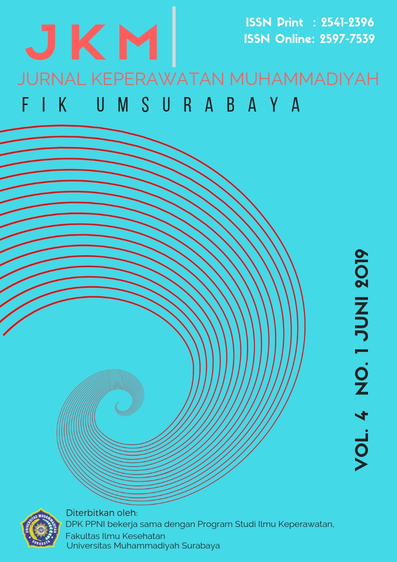Pengaruh Penggunaan Lensa Kontak, Kelembapan, dan Pengetahuan Terhadap Dry Eyes Syndrome
DOI:
https://doi.org/10.30651/jkm.v4i1.2038Keywords:
Effect, Contact Lens, dry Eyes SyndromeAbstract
Objective: The Effect of Contact Lenses, humidity, and knowledge on the dry eyes syndrome.
Methods: The type of reserach used is observation. The dimensions of study time are cross sectional because of data collection and outcome at one time. Humidity variables were measured using thermohygrometer and users’characteristic were obtained by questionnaire. The statistical test used is multiple logistic regression to find out effect of  Contact Lenses Type, length of lens usage, humidity, and knowledge on the dry eyes syndrome.
Results:  Respondents were students  Faculty of Public Health UNAIR from 2014-2017. Based on the type of lens, 90.9% of respondents used daily wear and 9.1% of respondents used overnight wear or extended wear. Based on the length of use of the lens  84.8% using a lens more than 4 hours and 15.2% less than 4 hours. Based on knowledge of 51.5% having high knowledge and 48.5% having low knowledge. Based on the humidity of the space of 54.5% the humidity level of the air conditioned lecture hall is appropriate and 45.5% is not suitable.
Logisti regression test results obtained value of 4.732 Wald with a probability of 0.030, which means that there is a significant effect of moisture on the dry eyes syndrome while the user characteristics there is no significant effect.
Â
Conclusion: Â Based on the results of research conducted Students of the Faculty of Public Health, there are some conclusions that most respondents use the type of daily wear lens. Respondents use contact lenses more than 4 hours and users' knowledge in the high category. Humidity of spaces in the Faculty of Public Health is 54.5% stated to be appropriate and 45.5% is declared inappropriate.References
Lee L. (2002). Prevalence And Risk Factors Associated With Dry Eye Symptoms: A Population Based Study In Indonesia. . Br J Ophthalmol 86. , P. 1347 - 1351 .
Wakarie LR (2014). Perbandingan Produksi Air Mata Pada Pengguna Lensa Kontak Dengan Yang Tidak Menggunakan Lensa Kontak.Ejurnal Unsrat.
John P. Whitvher, J. P. (2009). Vaughan and Asbury Oftalmologi Umum. Penerbit Buku Kedokteran EGC.
Syaqdiyah WH, dkk. (2018). Hubungan Lama Pemakaian Lensa Kontak dengan Mata Kering. Jurnal Kedokteran Diponegoro.Vol.7, Nomor 2.
Pieterz EL, dkk (2016). Penggunaan Lensa Kontak dan Pengaruhnya terhadap dry Eyes pada Mahasiswa Fakultas Ekonomi Universitas Sam Ratulangi. Jurnal E-Clinic, Volume 4, Nomor 1.
Downloads
Published
Issue
Section
License
- Penulis tetap memegang hak atas karyanya dan memberikan hak publikasi pertama kepada jurnal ini yang secara simultan karya tersebut dilisensikan di bawah:Â Creative Commons Attribution-ShareAlike 4.0 International (CC BY-SA 4.0)













